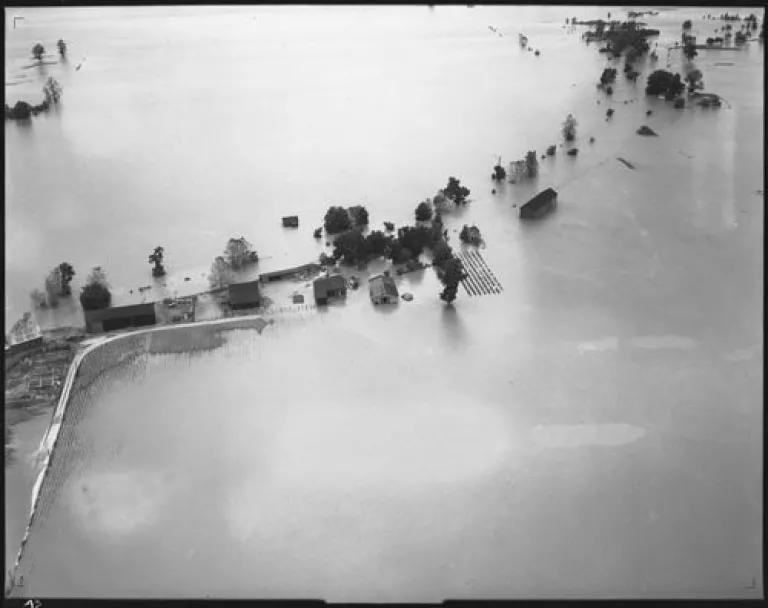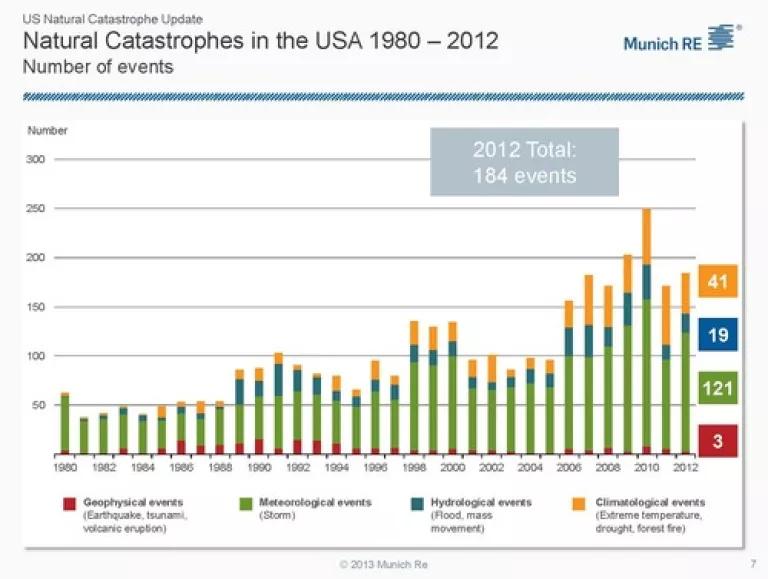
It’s time to take serious action to prepare for the impacts of climate change, so warns the newest National Climate Assessment report released today. Some of the biggest impacts will be felt along our rivers, lakes and ocean coastlines as rainfall patterns continue to shift towards periods of extreme wet and extreme dry, and as sea levels continue to rise. These projected impacts add up to a very challenging future for our water resources. Below are some of the key findings.
me droughts are expected to intensify in most regions of the country, with even longer reductions in water availability in the Southwest, Southeast, and Hawaii.

The severe impacts of climate change are not just forecasts of the future; we are already experiencing extreme weather events more often, consistent with the findings of the current and past National Climate Assessments. California has been suffering a record drought for much of the past two years, something my colleague Ben Chou has written about today. In 2013, parts of Colorado endured drought, wildfires, and unprecedented flooding, all in the span of a few months. The Mississippi River saw record flooding in 2011 followed by a crippling drought in 2012 that sent river levels so low, barges could not travel between St. Louis, Missouri and Cairo, Illinois. Across the nation, we have seen an increasing trend in extreme weather events and disasters that the National Climate Assessment has been telling us to expect, and only further underscores in the latest version.
The graph below by Munich RE illustrates this trend. As one of the world’s largest re-insurance companies Munich RE understandably keeps close tabs on these kinds of extreme weather events.

The good news is, we can and should do more than worry. We can be prepared for the worst climate impacts with action. By investing in some sensible solutions we’re trying to advance below, we will help position our communities for resiliency in the face of climate change.
Flooding
- Incorporate future flood risks into flood maps. The Federal Emergency Management Agency (FEMA) is responsible for mapping flood risks for coastal communities. But what happens when they’re wrong and can’t keep up with the latest science? The flood maps produced by FEMA are practically outdated upon being published, because flood risks are steadily rising due to climate change. And worse, because 20 or more years may elapse between map updates, development decisions are all too often based on inaccurate maps. New York and New New Jersey experienced this first-hand when Superstorm Sandy caused flooding far more extensive that FEMA’s flood maps predicted. New maps proposed for those areas still fail to account for sea level rise.
- Shift flood insurance prices so they more accurately reflect flooding risks. Federal flood insurance is subsidized for many landowners that live in the most flood prone areas. Should all subsidies be eliminated? No, but if we continue to provide subsidies, perhaps it should be contingent on property owners agreeing to relocate after the next flood damages their property.
- Incentivize relocation options out of flood prone areas for at-risk property owners. At present, people have to be pretty determined to jump through the extra hoops necessary to get state and federal assistance to relocate. Let’s make it as easy as possible to move to higher ground, perhaps in exchange for subsidized rates.
Water Infrastructure
- Build the right water infrastructure today. As communities replace or upgrade their water infrastructure, they must factor in how future floods and droughts could affect their operations. Drinking water, wastewater, and stormwater systems will operate under very different conditions 10, 15, or 20 years from now, well within their design lives. It is far less costly to build the right infrastructure today than to retrofit or replace millions of dollars of infrastructure later on.
- Prioritize water efficiency and green infrastructure in long-term water strategy. Communities must make water efficiency and green infrastructure integral components of a long-term water infrastructure strategy. These techniques are much better ways of making a community more resilient and sustainable when compared to the old bigger-is-better approach to water infrastructure.
- Ensure these investments with financial support. Make water efficiency and green infrastructure higher priorities for financial support. Across the nation states have about $110 billion in capital at their disposal for water infrastructure through federally capitalized “state revolving funds.” But very little of this money is used to implement measures that make water systems and the communities they serve more resilient and sustainable. USEPA and states need to place a much higher priority on funding water efficiency, green infrastructure, and other projects that enhance community resiliency.
Disaster Preparedness
- FEMA needs to develop the tools that allow disaster planners to better understand the near term risks of climate change. Many climate change studies describe impacts that are 50 or even 100 years away. But each year, climate change subtly loads the dice in favor of larger storms, heat waves, and droughts, making what used to be uncommon events much more likely, even in the near term.
- FEMA’s approval of state disaster preparedness plans should be predicated on states doing a thorough analysis of climate change risks and how climate change will affect the frequency and severity of future natural disasters.

